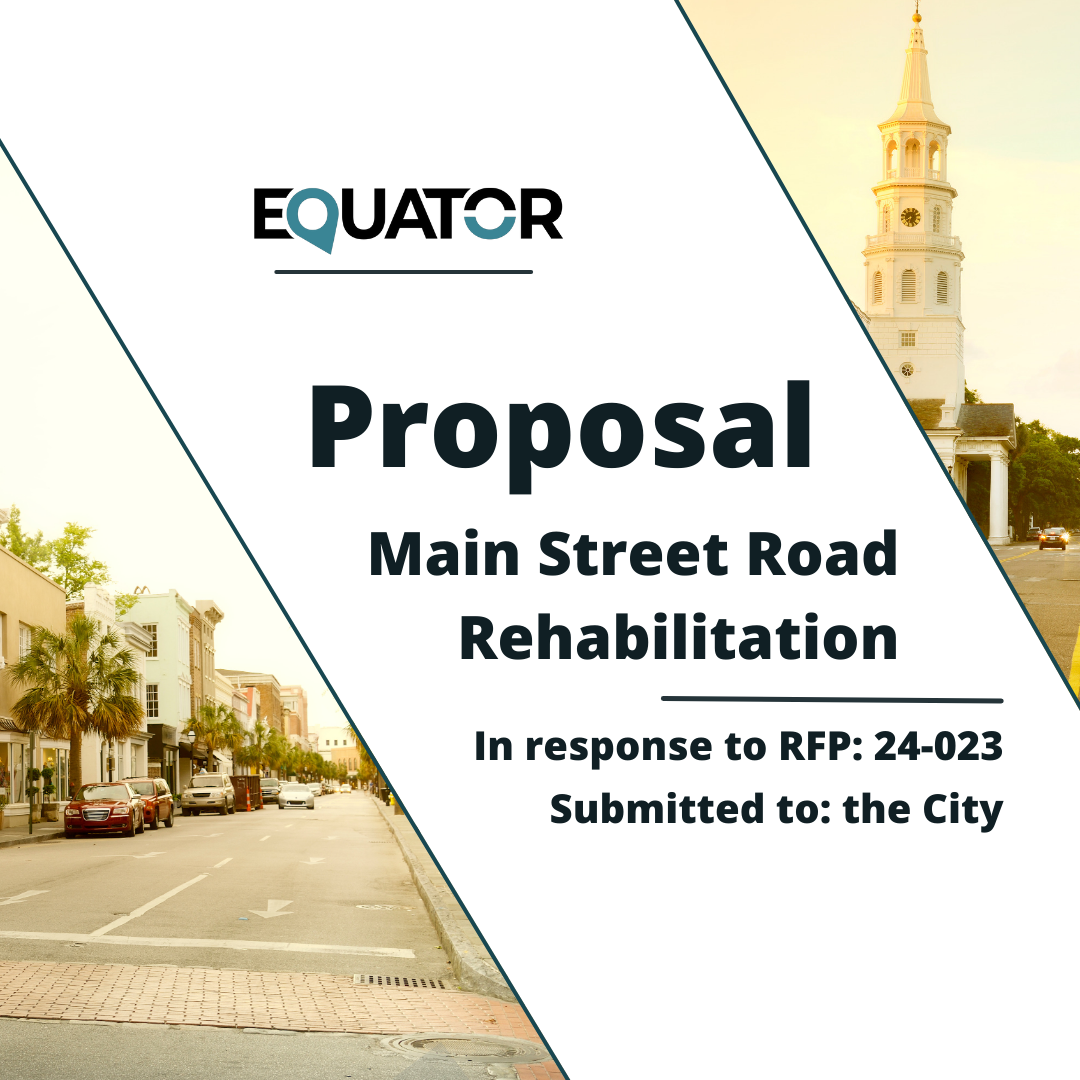How to Write a Civil Engineering Proposal
This post will outline the following:
- what a civil engineering proposal actually is and who creates them;
- the critical sections that should be included in a civil engineering proposal; and
- key tips for creating winning engineering proposals.
What is a Civil Engineering Proposal
A civil engineering proposal is a formal document created by a civil engineering firm or professional engineer in response to a request for proposal (RFP). The proposal aims to inform potential clients about the engineering services that they can offer and convince them to choose the proposing firm for the project. It outlines a proposed project, its objectives, scope, methodology, timeline, and estimated costs.

Civil Engineering Proposal Cover Page Example
Effortlessly produce winning proposals in half the time using Equator’s Proposal Generator Tool.
Let us show you how.
Critical Sections of a Civil Engineering Proposal
When reading an RFP, often the sections that need to be included in the civil engineering proposal will be outlined. Below are some of the key sections that will be required in every civil engineering proposal. These are generic titles and the RFP may call them something slightly different. It is recommended that you use the wording outlined in the RFP to allow the client to easily review your proposal.
1. Project Understanding
This section demonstrates your comprehensive understanding of the client’s requirements outlined in the RFP. It highlights your ability to identify and effectively address the issues presented and those that may present themselves throughout the process.
2. Project Methodology or Scope
This is similar to a procedures section of a science report. The explanation to the client will detail the approach for addressing the problem and fulfilling the requirements specified in the RFP document. You may also define the precise boundaries of the project and outline elements that fall outside its scope.
3. Project Team
In this section, you will present detailed profiles of each project team member, including their role, qualifications, and professional resume (or CV). The project team can be presented in various formats, such as text, tables, or graphics, such as an organizational (org) chart. Resumes are typically included as part of an appendix. Key team members include a Project Manager, Lead Engineer, Technical Support Staff, and Quality Control Manager or Reviewer.
4. Team Qualifications and Past Experience
This section shows that your team has the proper skills and knowledge required to complete the proposed work. Past projects can be listed in the proposal document and project sheets can be included as part of an appendix.
5. Project Schedule
A project schedule can be presented as text, in a table or in a GANTT chart. This section informs your potential client of how long each task will take and the ultimate project completion date.
6. Project Budget
The project budget can be presented in the technical proposal or in a separate financial proposal, depending on the RFP requirements. This section outlines the expected expenses for the project. It is divided into tasks to give a detailed breakdown and ends with the total cost of the project.
Key Tips for a Winning Proposal
Although some of these tips may sound like common sense, they are often overlooked when project teams are rushing to finish proposals. Make sure you follow each of the tips below for a winning proposal:
- Use clear and concise language – most proposals are restricted to a certain number of words or pages. Ensure that you use precise technical language and eliminate unnecessary words from your proposal to enhance its effectiveness.
- Provide examples – demonstrate that you know how to address the client’s needs through previous project examples
- Make it client specific – tailor your proposal to the client by focusing on their needs, values, and issues. This will demonstrate that you truly understand and are interested in working with them.
- Proofread for grammar and spelling mistakes
- Have consistent formatting and style throughout – a consistent and well laid out proposal shows that you are professional and pay attention to detail, two things the client values when hiring an engineering consultant.
For more tips and tricks, check out our previous post titled Top 12 Winning Engineering Proposal Tips.








